|
Author
|
Topic: Your today in pictures..
|
|
|
|
|
|
|
|
|
|
|
|
|
Steve Klare
Film Guy

Posts: 7016
From: Long Island, NY, USA
Registered: Jun 2003
|
 posted September 29, 2015 12:08 PM
posted September 29, 2015 12:08 PM



High Noon at The OK (equipment) Corral. Brookhaven National Laboratories, Upton, New York
This is a transformer we have in our tested equipment cage here at BNL. It’s a big one: 333,000 VA, or 3,330 typical projection lamps in our way of thinking. It’s not a super-big one, those run in the millions of Volt Amperes, sit behind barbwire topped cyclone fences, hum menacingly and power entire neighborhoods.
All due respect though: if this fell on you from almost any height, they would probably bury you in an envelope after a great deal of mopping.
These are kind of an unsung technology, probably as important as the internal combustion engine and arguably much more important than the personal computer, because if it wasn’t for the transformer, almost none of us would have one of them, but how many people understand what they do?
These take advantage of a basic fact of electricity: Volts times Amperes =Power. This means a thousand volts and an amp is the same power as a thousand amps and a volt. A transformer acts kind of like a set of gears: Torque times Rotational speed=Power, so you can use different gear ratios to either go really fast or twist really hard or anywhere in between.
A transformer does something similar by changing the values of Volts and Amps, but keeping the power the same by dividing one by the same ratio it multiplies the other.
A problem you have with sending electric power all over the place is Amps don’t travel well. The power lost is proportional to the current squared, so in order to send a large current a long distance you would need thick wire that would cost huge amounts and bend utility poles in half. Once Utah ran out of copper, it would be lights out!
This is where our friend the transformer comes in. It can use its ability to change the values of current and voltage to take the power at the power plant, boost the voltage up to downright terrifying levels (often millions of Volts) yet at a tiny trickle of current which can go vast distances through small wires. When it gets wherever we need it another transformer does the same thing in reverse: reduces the voltages to levels that won't leap across the room and kill us yet still at usable power levels.
The alternative would be to have a power plant every block or so, which simply means that most of us wouldn’t have electric power in our homes today. There wouldn’t even be any debate between video and film for home entertainment: “projection” would mean shadow puppets by kerosene lanterns.
These work very reliably, efficiently and simply. The technology is well over a hundred years old, yet doesn't change very much because it works so well. Many of these still in use were put in during our grandparents' day: there is no reason to replace them.
So the next time you see a transformer, thank it! It of course is an inanimate object and doesn’t care, but it’s good for us to appreciate what we have!
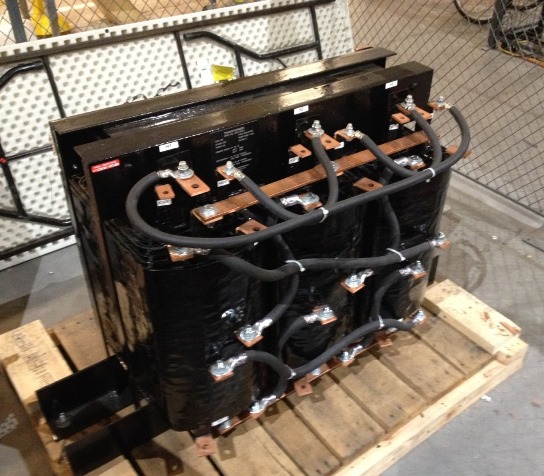
--------------------
All I ask is a wide screen and a projector to light her by...
| IP: Logged
|
|
|
|
|
|
Paul Adsett
Film God
Posts: 5003
From: USA
Registered: Jun 2003
|
 posted September 29, 2015 06:30 PM
posted September 29, 2015 06:30 PM



Steve is such a genius at explaining all things electrical in every day terms. How right he is about the transformer being the unsung hero of electrical transmission. All thanks to George Westinghouse of course, who championed AC, whereas Edison wanted all power transmission to be DC. How he disliked all things Westinghouse, but that fact revealing once more that, genius as he was, Edison gets a lot of undeserved credit ( he did not invent the film projector, (that honor goes to the Lumiere Brothers in France).
Bryan, that's a great looking Nizo Reg 8mm camera. So much great engineering and character, it makes a home digital movie camera look like a piece of plastic junk!
--------------------
The best of all worlds- 8mm, super 8mm, 9.5mm, and HD Digital Projection,
Elmo GS1200 f1.0 2-blade
Eumig S938 Stereo f1.0 Ektar
Panasonic PT-AE4000U digital pj
| IP: Logged
|
|
|
|
|
|
|
|
|
|
Graham Ritchie
Film God
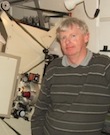
Posts: 4001
From: New Zealand
Registered: Feb 2006
|
 posted September 30, 2015 01:00 AM
posted September 30, 2015 01:00 AM



Talking about transformers ![[Smile]](smile.gif) ...well I removed this one from an old slide projector that, in its "past life" would supply voltage to a 12 volt lamp. After pulling everything apart, I was going to use it, to operate a 12 volt relay, used for heavy duty applications. The problem was the 12 volts from the transformer must have been AC as the relay would only buzz but not operate. ...well I removed this one from an old slide projector that, in its "past life" would supply voltage to a 12 volt lamp. After pulling everything apart, I was going to use it, to operate a 12 volt relay, used for heavy duty applications. The problem was the 12 volts from the transformer must have been AC as the relay would only buzz but not operate.
For $3.50 I bought a four pin rectifier..."that did the trick" to give me the 12 volts DC...bingo the relay now works. The idea of all this, is to wire the mains motor to the relay, and the 12 volts through a 5 amp CB to the old wrap detector for the 35mm platter.
In the event of a platter "wrap up" the switch that's on the detector at the moment will kill the 12 volt supply, thus the relay will release, shutting the motor down. The run down of the projector with film on the accumulator side of the wrap detector will allow the film to come to a slow halt, without any strain to film or projector.
That's the theory folks ![[Roll Eyes]](rolleyes.gif) and it should work, all the components are operating well in there electrical range. and it should work, all the components are operating well in there electrical range.
In this photo is the general 12 volt layout, once everything is fitted neatly into the speaker box, then I will sort out the mains side of things. The mains fuse 5amp and the 5amp CB for the 12 volt supply should make thing nice and safe. I have included a green 12 Volt 10 amp illuminated LED switch...power on.. circuit complete projector can start... LED out 12 volts off line... motor stops ![[Wink]](wink.gif) 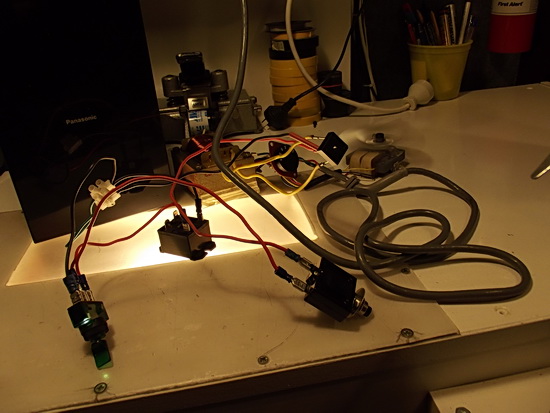
| IP: Logged
|
|
|
|
|
|
|
|
|
|
|
|
|
|
|
|
|
|
|
|
|
|
|



 UBBFriend: Email this page to someone!
UBBFriend: Email this page to someone!
 Printer-friendly view of this topic
Printer-friendly view of this topic



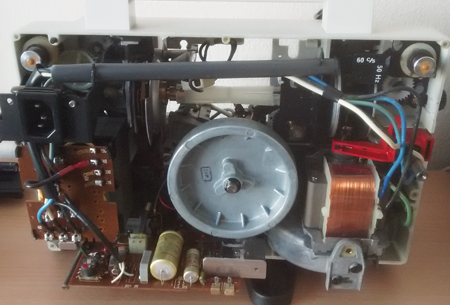
![[Cool]](cool.gif)



![[Smile]](smile.gif)


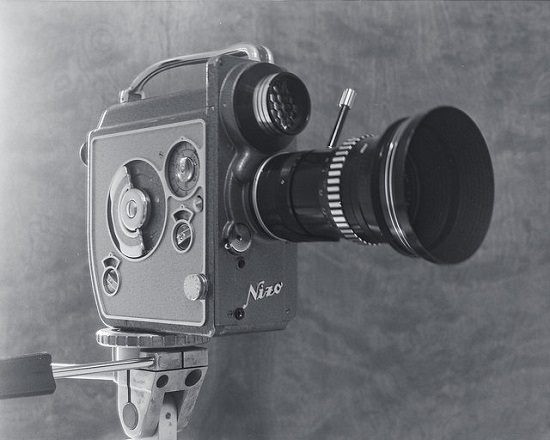
![[Roll Eyes]](rolleyes.gif) and it should work, all the components are operating well in there electrical range.
and it should work, all the components are operating well in there electrical range.![[Wink]](wink.gif)
![[Big Grin]](biggrin.gif)





